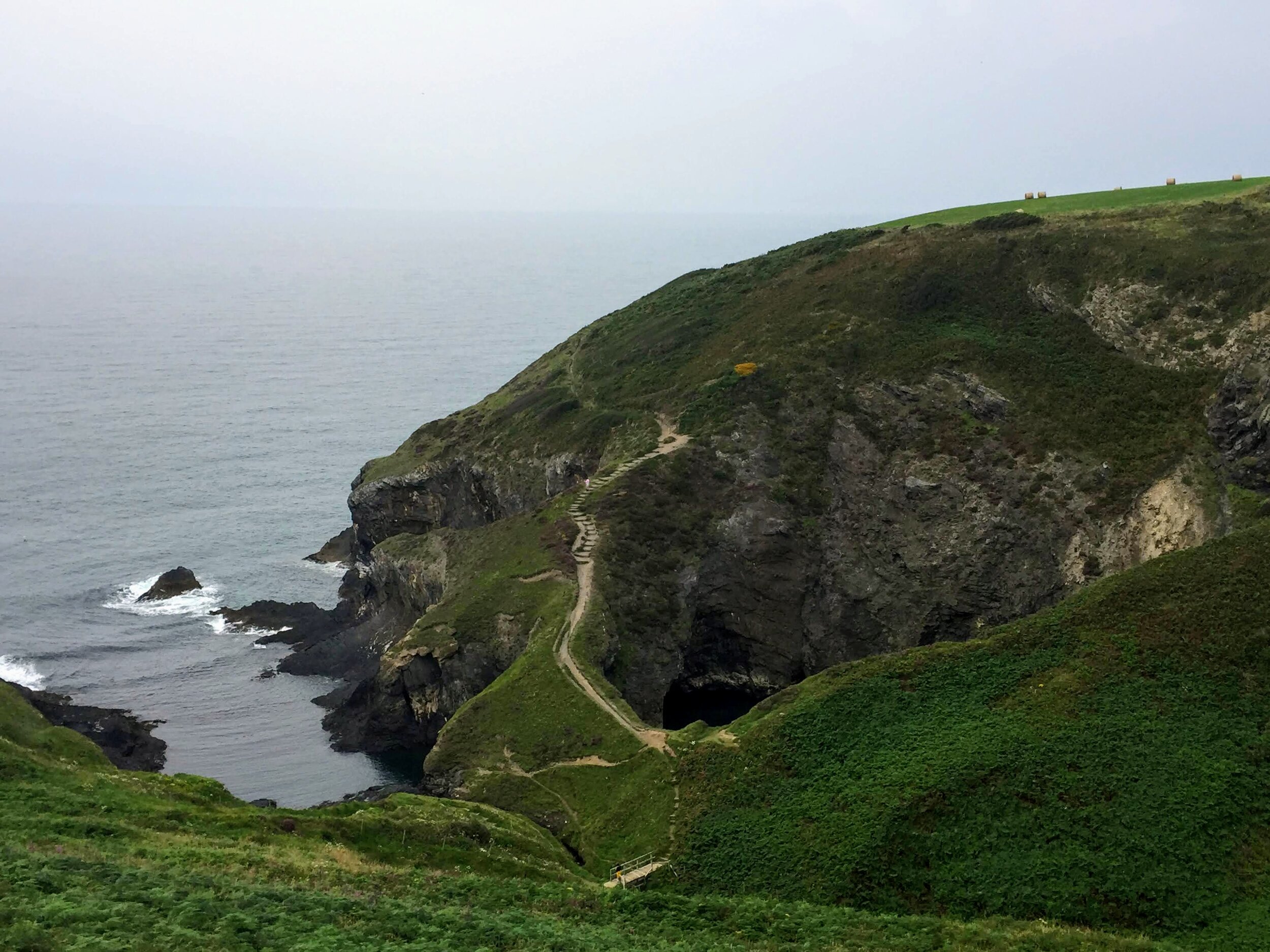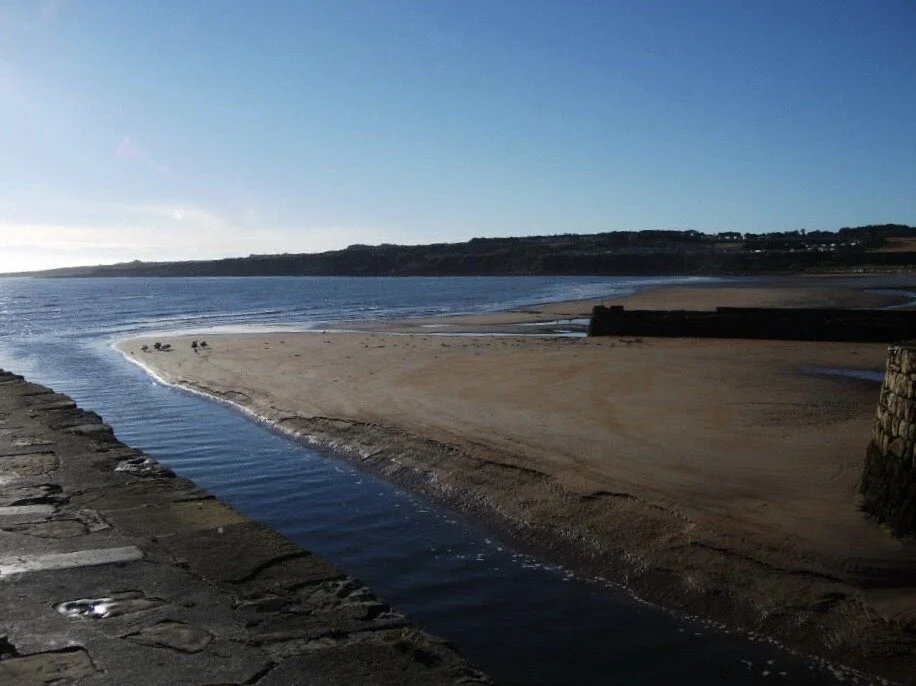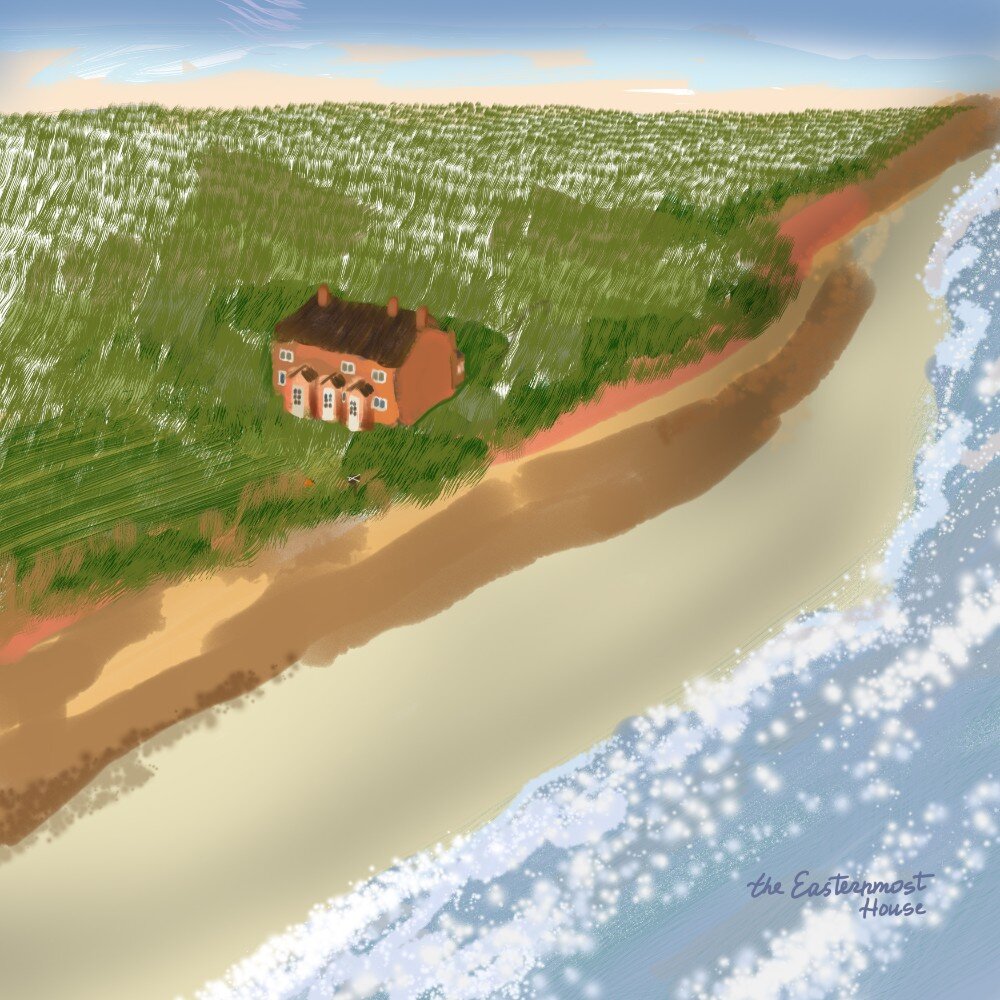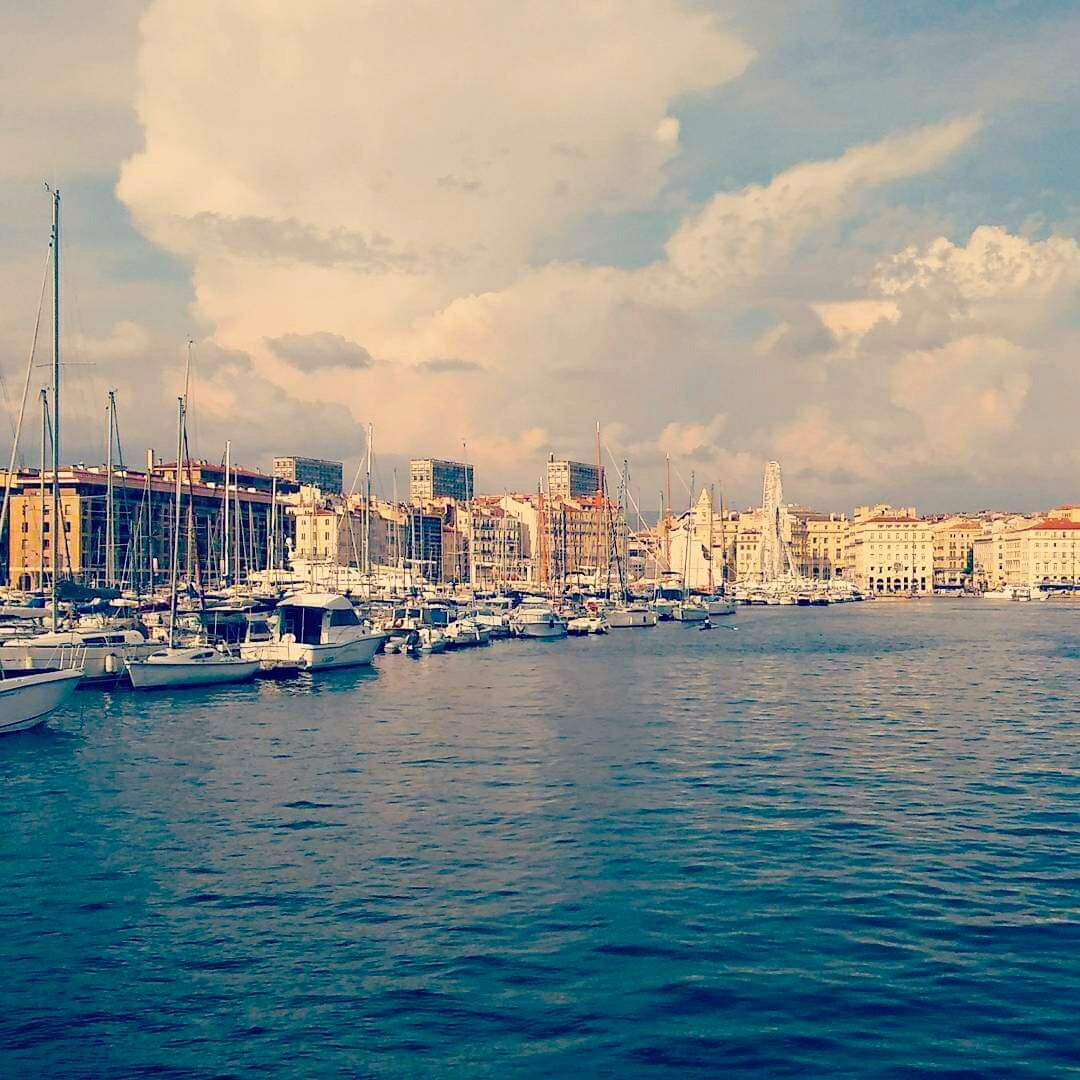The Green of Swimming
/By Sally Gander:
You slip into the water from the moss-wet shore, the slanted rocks sometimes sharp sometimes smooth beneath your palms as you edge your way deeper. The opening to the cove is white with surf but here the water is glass still and cold enough to make you gasp once, twice, three times, but then your lungs expand, the shiver over your skin rejuvenating against the humidity of the day.
Your guide has brought you here from the village, trekking past a farm and through a verdant wooded valley where everything was some shade of green except for the dark earth of the path ahead of you, then up onto the cliff top and along and around and down a natural stairway created by layers of rock that have been folded and fractured into steps and gullies, small waterfalls and archways and the cave you swim towards now, the place known as the Witch’s Cauldron.
You want to swim inside but the gap between water and cave roof is too narrow and you imagine the clash of your head against the jagged rock, the witch hiding in the shadows to laugh at this fragile thing she has tempted into her lair. Your guide beckons you closer to see the light beyond where a giant blow-hole resides and the witch keeps watch over the Cauldron itself. We’ll be patient, your guide tells you, the tide is turning.
While you wait you touch the rock of the cave mouth, the browns and greens and yellows formed millions of years before humans were conceived, the world exploring its capability, playing with the potential chemistry and physics of the materials she was gifted. You run your fingers down a calcified vein that’s thick as a rope, formed by a rivulet of water, you suppose, but it is vein-like enough to be the back of the witch’s hand reaching over the cliff tops, her fingers deep in the water to find the things she needs for the cauldron, the seaweed and crustaceans and shingling pebbles and small silvery fish that bunch together in glittering camaraderie.
As she works you lie back and float in the cradling stillness, letting your feet hang, only needing the smallest sweep of your hands to remain in place. It won’t be long before the cold inches its way deeper into your body, numbing your fingers and toes and cooling your organs, but for now you rest on the rhythm of the tide, glimpsing the rocks and grassy cliff tops that frame the pale blue sky.
Finally, the witch finishes her work and the tide retreats to her bidding. You return to the cave mouth to find your guide has already swum through, his face shadowed with the light beyond him. He reaches his hand out to you, Take your time, he says, take it slowly.
You touch the damp rock above you, kick your legs to move through the water, feeling the distance between the crown of your head and the cool cave roof, mere inches, sometimes less, and you are captivated by this sensation of buoyancy, of being drawn into the light of unknowingness and how quickly the cave opens up again, the roof now vast above your head and you within the glittering emerald green of the Witch’s Cauldron, smiling at the ease with which you can move into such a place.
You stop here and tread water, gazing at the witch’s creation and the power she has in those veined hands, and how, at other times when the volatile brews are composed and the tide is high, this cauldron becomes a broiling spitting turbulent fusion of white and dark, a culmination of everything the witch knows about the world, the actions and reactions, the people she has loved or been persecuted by, the centuries she has lived and endured and held faith regardless of her trials.
She knows the heat of chemistry that shapes the surface of this earth, the gravity that hugs things close, the movement of water and winds, of plants and trees and animals, of the animal humans who push beyond their natural realm. She knows the power of the sea in which you swim and she has allowed you to be here. Perhaps her new brew needed your human scent or the stirring kick of your tender legs, but you feel now that this emerald potion is complete and you are its ingredient as well as its recipient, held spellbound in the completeness of the universe — the sky, the rock, the water, the flesh — the witch holds it all in her palm and when she hands it to you the green glows bright, a green that whispers This is all you will ever need…
***
Sally Gander writes fiction and creative nonfiction. Her work has appeared in Litro, The Real Story, The Blue Nib and A Word in Your Ear, and is forthcoming in Porridge. She has also performed for Story Fridays in Bath. For many years she taught Creative Writing at Bath Spa University, and now teaches students from across the world at Advanced Studies in England. She is currently building a collection of personal essays.









